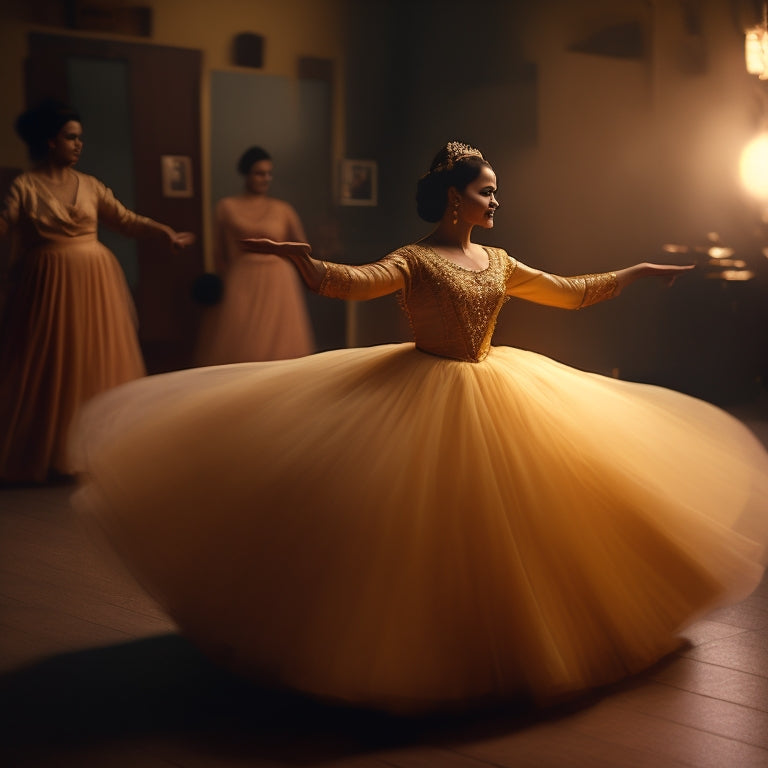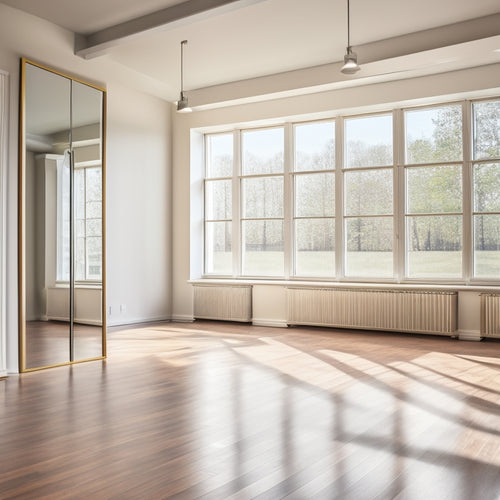
Exploring Family, Tradition, and Change Through Dance
Share
In traditional Irish communities, dance serves as a powerful expression of cultural heritage and identity, highlighting the tension between preserving cultural roots and embracing modernity. As families navigate the complexities of tradition and change, dance becomes a symbolic language, embodying the interplay between cultural heritage and personal aspirations. As Ireland evolves, external influences disrupt familiar rhythms, and communities must reconcile their cultural norms with emerging modernity. Through dance, individuals and communities transcend struggles, embracing their cultural roots amid modern challenges, and it's in this intricate dance that the harmonies and discords of Ireland's cultural heritage come alive, revealing even more complexities.
Key Takeaways
• Family dynamics are intricately tied to cultural heritage, influencing personal aspirations and cultural norms.
• The introduction of radio and external influences disrupts traditional rhythms, sparking tensions between heritage and modernity.
• Dance serves as a powerful expression of identity, cultural affiliation, and a means to transcend struggles while embracing cultural roots.
• In the face of modernity, dance becomes a symbol of connection to cultural heritage, highlighting the community's struggle to adapt to change.
• The intersection of family, tradition, and dance reveals the complexities of navigating cultural evolution while preserving cultural identity.
Rhythms of Family and Tradition
Through the intricate web of relationships and traditions, the Mundy sisters' lives are orchestrated by the rhythms of family and tradition, which are deeply rooted in their Catholic upbringing and the cultural heritage of rural Ireland.
The sisters' experiences are shaped by the interplay between family dynamics and cultural heritage, as they navigate the complexities of their relationships and the expectations placed upon them.
The sisters' individual struggles and desires are influenced by the family's cultural heritage, which is deeply embedded in the Catholic Church's teachings and the traditions of rural Ireland.
As they navigate their lives, the sisters must reconcile their personal aspirations with the cultural norms that have defined their family's history.
Steps Into a Changing World
As the Mundy sisters navigate the complexities of their relationships and cultural heritage, they begin to take tentative steps into a changing world, where the comforts of tradition are being eroded by the winds of modernity. The once-familiar rhythms of their lives are disrupted by the introduction of the radio, symbolizing the encroachment of modernity. This shift is reflected in their evolving traditions, as they struggle to reconcile their cultural heritage with the demands of a rapidly changing world.
| Tradition | Modernity | Impact |
|---|---|---|
| Familiar rhythms | Radio introduction | Disruption of traditional life |
| Cultural heritage | Emerging Republic of Ireland | Evolution of traditions |
| Insular community | External influences | Shift towards modernity |
In this liminal space, the sisters must confront the tensions between their cultural heritage and the evolving traditions that threaten to upend their lives.
Dance of Identity and Culture
One pivotal aspect of the Mundy sisters' struggle to reconcile their cultural heritage with the demands of modernity is their complex relationship with dance, which serves as a powerful expression of their identity and cultural affiliation.
Through dance, the sisters embody the tensions between tradition and modernity, as they navigate the constraints of their small Irish town and the allure of external influences. Dance becomes an identity expression, a cultural celebration that connects them to their heritage and community.
As they move in harmony, their bodies convey a sense of freedom, joy, and belonging. In these fleeting moments, the sisters transcend their struggles, embracing their cultural roots and forging a sense of self.
Through dance, they momentarily reconcile their past and present, tradition and modernity.
Harmony and Discord in Ballybeg
In the small town of Ballybeg, where the Mundy sisters' dance embodies the harmony of their cultural heritage, discordant notes of modernity and tradition clash, reflecting the community's struggle to adapt to an evolving Ireland.
As the sisters' dance weaves together traditional customs and modern influences, it highlights the complex interplay between familial bonds and societal tensions.
The community's struggle to reconcile traditional ways with modern conflicts is palpable, as the sisters navigate the changing landscape of their small town.
Amidst this turmoil, the dance becomes a powerful symbol of the Mundy sisters' connection to their cultural heritage, even as they confront the challenges of modernity.
As the lines between tradition and modernity blur, the sisters' dance remains a reflection of the enduring power of familial bonds and cultural identity.
Frequently Asked Questions
What Inspired Brian Friel to Write 'Dancing at Lughnasa'?
Brian Friel drew inspiration from his Irish identity and family roots, weaving a tapestry of nostalgia and social commentary in "Dancing at Lughnasa," as he explored the complexities of his own familial past.
How Does the Character of Father Jack Impact the Mundy Family Dynamics?
Father Jack's missionary work and patriarchal influence create family tensions, as his absence and perceived abandonment exacerbate the Mundy sisters' economic struggles, emotional isolation, and conflicting desires, further straining their already fragile relationships.
What Role Does the Festival of Lughnasa Play in the Narrative?
In "Dancing at Lughnasa", the Festival of Lughnasa embodies Celtic Heritage, symbolizing paganism and rural isolation, as the sisters' lively dance represents a fleeting escape from their hardships, momentarily unshackling them from societal constraints.
How Does the Radio Symbolize Societal Transformation in the Play?
The radio, a symbol of cultural upheaval, disrupts the Mundy sisters' traditional way of life, introducing social commentary on the emerging Republic of Ireland, as it brings the outside world into their Ballybeg home.
What Is the Significance of the Dance Scenes in 'Dancing at Lughnasa'?
Through exuberant dance scenes, the Mundy sisters express cultural heritage, sisterly bond, and fleeting joy, momentarily transcending economic hardships and societal constraints, as they lose themselves in the rhythmic freedom of traditional Irish steps.
Related Posts
-

Hip Hop Dance Apparel for Style and Function
Hip hop dance apparel combines style and functionality, so you can move with confidence and flair. Look for breathabl...
-

Tips and Tricks for Collapsible Ballet Bar Installation
To install your collapsible ballet bar, start by gathering essential tools like a drill, level, and measuring tape. M...
-

Master Dance at All Skill Levels Now
Mastering dance at any skill level is achievable, whether you're a beginner or an experienced dancer. Learn at your o...


